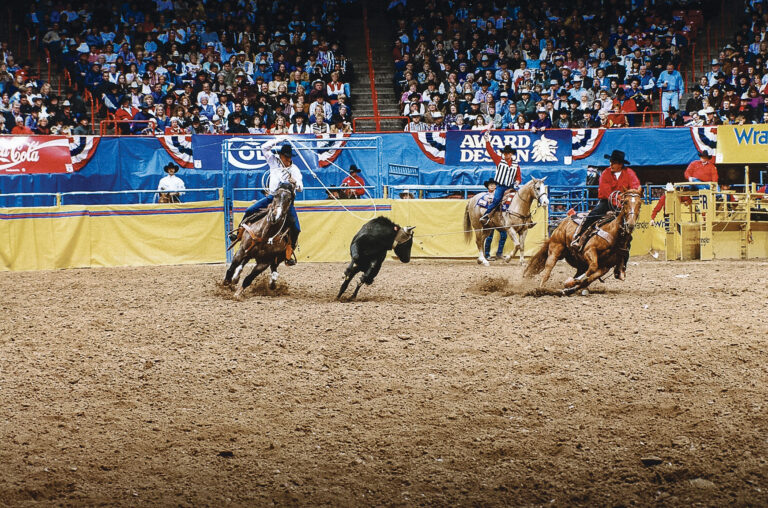When I first started rodeoing, the scores were longer and you had to give steers bigger head starts than they do today. We also gauged our starts a little different than they do now. Most everything was in relation “to the pin”—halfway to the pin, flank to the pin, hip to the pin, tail to pin. For years and years, the start was tail to the pin at most rodeos.
What that actually meant was, when the score was even—say, an 18-foot score and an 18-foot box—the score was automatically tail to the pin, with adjustments for what your steer did factored in. If it was a foot under—the score set at 17 feet out of an 18-foot box—the start was flank to the pin. That’s how I learned to score when I started rodeoing, and the terminology we used about scoring. But like everything else, times are changing when it comes to scoring.
Creating Good Scoring Habits: One Thing You’ve Got to Do to Keep Your Horse Listening
When we got to a rodeo, we went and looked at the length of the score and box. We’d go ask the judge first thing for those measurements. We didn’t have the luxury of cell phones to call our buddies who’d already roped there and ask about the start or what our steer did last time they ran him. Guys today exchange videos, and you get to watch your steer go before you rope.
In the old days, when you checked the draw, about the best you could do was see the time the last time someone ran your steer. That was a clue, but was like operating in the dark compared to the benefits of today’s technology and available information. They might have been a no-time on your steer, but come to find out he was the best one in the herd. Or you might get fooled because someone maxed out a bad steer and took the lead.
Generally speaking, the boxes are a little bit deeper now than they used to be. And the scoring terminology of the new generation of ropers is related to “out the end of the gate” instead of “to the pin,” because they watch the steer out of the front of the gate instead of judging by the pin. I think there’s an advantage to watching cattle out in front of the gate.
“Tail to the pin” back in our heyday would probably calculate to today’s lingo of “behind the shoulder out the end of the gate.” A really fast start today is “horn around the end of the gate” or “point of the shoulder around the end of the gate.” That steer’s just barely taken a step, but the scores now are a lot shorter than they were back in the day.
Another little fun fact is that during most of my career the front of the chute was typically flat, whereas most chutes today come to a point out in front of a steer’s nose. That has a lot to do with why the young guys gauge their start from out the front of the chute. It’s more efficient, because they don’t have to look down at the pin, then pick their heads up to look at the steer’s head as they’re taking off.
Back in the day, you had to get a good start and ride your horse across the line. Today, rodeo ropers are hitting the barrier and throwing. Scoring is still about timing with you and your horse, but the new generation of ropers are throwing when they hit the barrier.
The start at World Series ropings is like a bulldogging start. As long as the steer starts ahead of you, you can’t break the barrier. It’s timing, too, but when you nod, you take off. In my opinion, there’s no excuse to be late at a World Series roping. Getting out late can snowball fast, and they make it pretty easy to get out right on time. The box is deep enough that if the steer moves, you’re out.
When I roped at the NFR (National Finals Rodeo), I didn’t worry much about the barrier. You had to take a chance on that steer starting, because being late was not an option. A barrier won’t take you completely down, but missing the start can take you out of it fast. Yes, it’s plus-10 if a steer doesn’t start. But that’s a chance you have to take.











